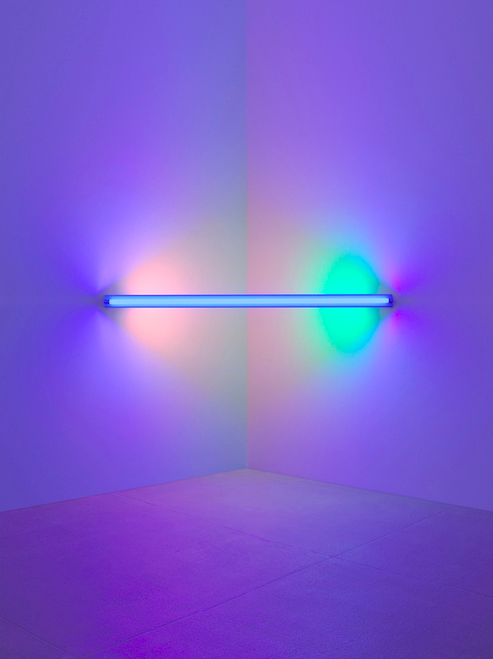The European Commission has shocked art critics and lawyers alike by ruling that Dan Flavin’s famous fluorescent light sculptures are not, in fact, art.
Well, sort of. According to The Guardian, the commission decided that for taxation purposes, all of Flavin’s pieces must be classified as light fixtures. The commission ruled that “it is not the installation that constitutes a ‘work of art’ but the result of the operations (the light effect) carried out by it.” Which, oddly enough, is in keeping with Flavin’s own statement about his readymade art, which dictated that the fluorescent lights he used in his works must be generic and commercially available. The ruling will directly affect any galleries or museums hoping to bring Flavin’s light sculptures into Europe; the import tax on sculptures is just 5%, while for light fixtures it’s 20%. But beyond the financial issues, the ruling also calls into question the meaning of the minimalist sculptor’s work.
British art critic Laura Cumming has argued that what gives Flavin’s colored light artistic merit is its notoriously dismal source: fluorescent strip bulbs. But if the fluorescent tubes themselves are disposable, are they part of the art object at all? The European Commission has answered that question with a firm “no,” declaring that these sculptures have “the characteristics of lighting fittings” and are “therefore to be classified […] as wall lighting fittings.”
The decision concludes a long legal battle that began in 2006, when the European Commission slapped the London gallery Haunch of Venison with a €36,000 VAT bill for a Flavin sculpture (which they judged to be a light fixture, not an art installation). Haunch of Venison’s lawyer, Pierre Valentin, defended the artwork, appealed against the tax, and won the case. At the time, Valentin told The Art Newspaper, “To suggest, for example, that a work by Dan Flavin is a work of art only when it is switched on, is comical.”
Unfortunately, Valentin’s appeal was later overturned. And so the “But is it art?” debate rages on.
Credits
Text Annie Armstrong
Photo via Flickr Creative Commons
